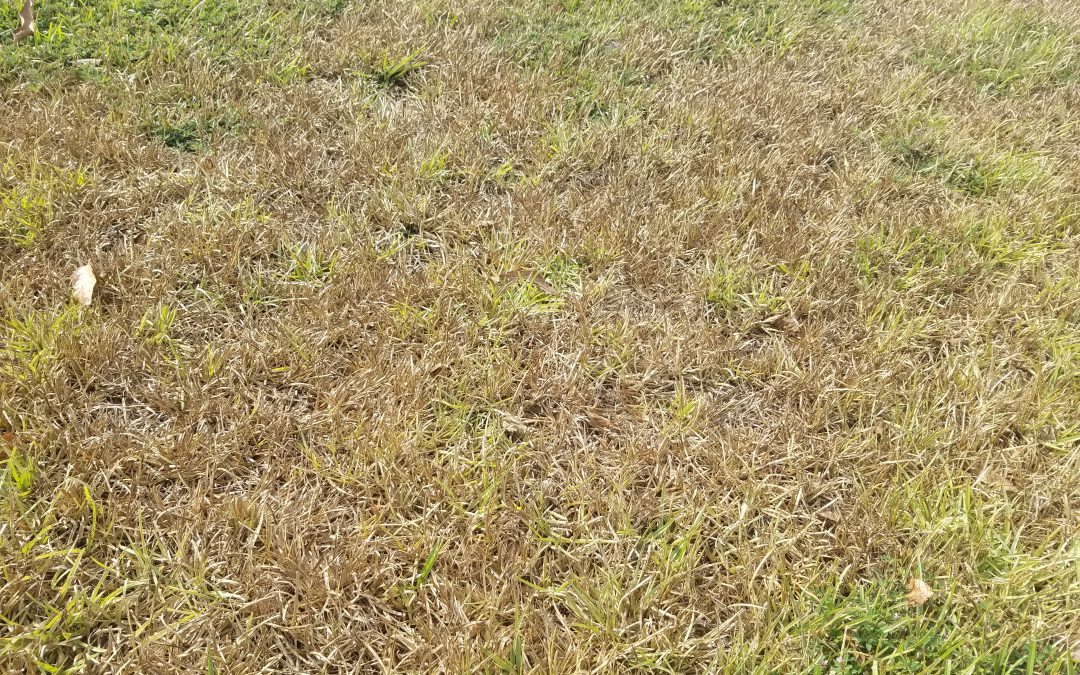
by Daniel J. Leonard | Sep 11, 2025
Many turfgrass yards, including mine, are feeling the effects of an extended droughty period this month. While one of the benefits of the primary turf species grown in the area (Centipedegrass, Zoysiagrass, Bermudagrass, and Bahiagrass), is their drought tolerant nature, they aren’t impervious to drought. Even with these tough grass species the difference between a yard coming out of a drought in decent shape versus dead is as simple as remembering the answers to the following four maintenance questions.
How much should I water to keep my grass alive?
Lawngrass needs about ¾-1” of water per week to remain looking its best and growing vigorously. Obviously, unless you have an irrigation system, keeping a large yard of turfgrass in that ideal water range is going to be hard or impossible. So, what to do? I encourage homeowners to focus their efforts on keeping grass around highly visible and often used areas of the yard well-watered, letting outlying areas fend for themselves until rain resumes. To ensure you’re putting out the optimal ¾-1” of irrigation per watering event, spread a few straight sided cans (tuna or cat food cans work great) under the sprinkler’s range, allow it to run until you reach the 1” mark, and note how long it took to apply that amount of water. This will help you dial in your watering and ensure water isn’t wasted.
Should I mow during a drought?
We all know that an unmown yard looks unkempt. However, given that mowing is a major stress on turfgrass, mowing during a drought can weaken your yard’s ability to recover when the drought ends. If you must mow to keep things looking neat, try to mow only areas that you keep watered and raise your mower’s deck to reduce the amount of leaf tissue you cut from the grass. Mowing in this manner will reduce stress on your turf and keep the yard from appearing weedy and unkempt. My unirrigated Centipedegrass yard has been flowering and setting seed over the last few weeks. My last mowing event (during the current dry period) was designed to only remove seedheads and minimize removal of leaf tissue.
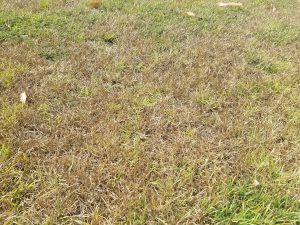
Unirrigated Centipedegrass turf showing drought stress – photo courtesy of Daniel Leonard.
Should I fertilize?
This one is easy! Don’t fertilize grass during a drought! For one, fertilizer promotes growth, and grass isn’t trying to grow during a drought, simply survive. Fertilizing in these times is another unnecessary stress. Additionally, fertilizer requires water to transport nutrients down to the plant roots. If there is no water to do so, it will simply sit there and wait on rain. Also, some or all the nitrogen in the fertilizer applied will volatize and return to the atmosphere, wasting your time, money, and effort and stressing your turfgrass in the process. Hold the fertilizer until rain begins again.
What do I do about weeds?
Turfgrass isn’t the only thing stressed during droughts; weeds are as well. During stressful events like droughts, all plants (weeds included) stop growing and enter survival mode. This has major implications for weed control, as herbicides are not particularly effective on weeds with drought defenses up. In addition to being ineffective, herbicides can injure stressed turfgrass, preventing a healthy recovery post-drought. So, keep the herbicide off the yard until the weeds, and your turf, are happy and growing again.
Maintaining an unirrigated lawn during drought is more about what you don’t do – less mowing and no fertilizer or herbicide applications – than what you do. Mowing too low, applying fertilizer, and trying to control weeds with herbicide are all potential stressors of turf and can inhibit its recovery when the rain returns. The best you can do to keep your lawn healthy in dry times is to apply ¾-1” of water per week and pray for rain! For more information about lawn management or any other horticultural topic, contact your local UF/IFAS County Extension office.
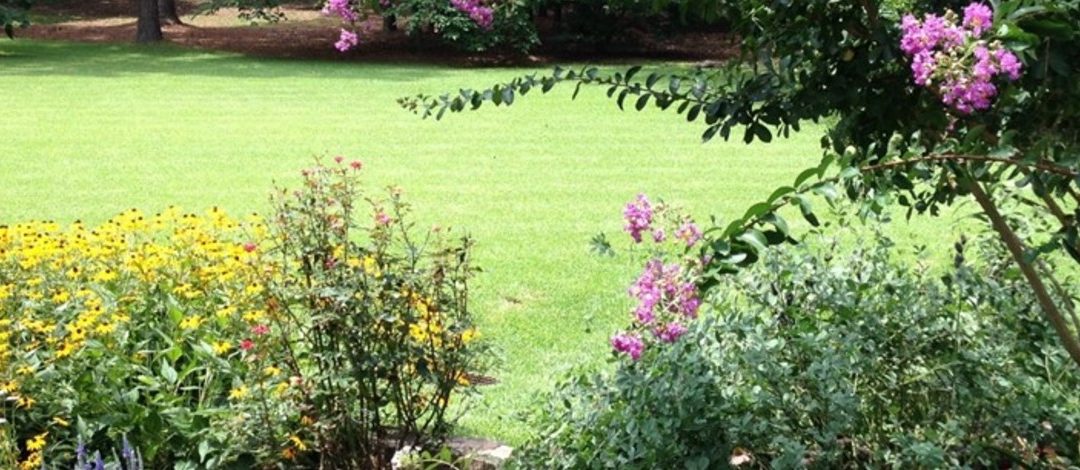
by Larry Williams | Aug 23, 2025
Hot, summer months are not the time to be using most lawn herbicides.
One issue is the heat of summer. Most lawn herbicide labels include statements such as the following. “Do not apply when temperature exceeds 90°F.” “Do not broadcast apply this product when air temperatures are above 90°F (85°F for St. Augustinegrass) unless temporary turf injury can be tolerated.”
Every year lawns are injured or killed because of lawn herbicides being applied when temperatures are too hot.
Summer is usually a rainy and windy time of the year. Many lawn herbicide labels include statements such as the following. “Allow 12 hours after application before watering lawn for maximum effectives on listed weeds.” “Apply only when wind is no more than 10 mph.” “Applying this product in calm weather when rain is not predicted for the next 24 hours will help to ensure that wind or rain does not blow or wash pesticide off the treatment area.”
It is critical to read and follow the label directions and precautions for any pesticide you use. Pesticide labels, including herbicides, include the following statements. “To the extent consistent with applicable law, the buyer assumes all risks of use, storage or handling of this product not in accordance with label directions.” “It is a violation of Federal law to use this product in a manner inconsistent with its labeling.”
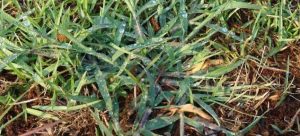
Crabgrass growing in centipedegrass lawn. Photo credit: UF/IFAS Extension
By the time summer arrives, many of the lawn weeds are mature, which means they are well established with extensive root systems. These mature, well-established weeds are more difficult to control. The same weeds are more susceptible to herbicides when they are small, young and not well established. Also, these mature weeds have produced countless numbers of seeds by summer. Most weeds are prolific seed producers.
A single crabgrass plant (a common summer lawn weed) can produce 150,000 seeds!
Applying a preemergence lawn herbicide in February to help prevent summer annual weeds such as crabgrass or applying a postemergence lawn herbicide during spring while the temperature is mild and before the weeds are out of control simply makes more sense than waiting until summer.
The best options now with lawn weed control involve continuing to follow good mowing practices, maybe hand removal of some weeds and just simply waiting for next February and spring to use lawn herbicides.
In the meantime, you may want to read the following UF/IFAS Extension publication on lawn weed control. https://edis.ifas.ufl.edu/pdf/EP/EP14100.pdf
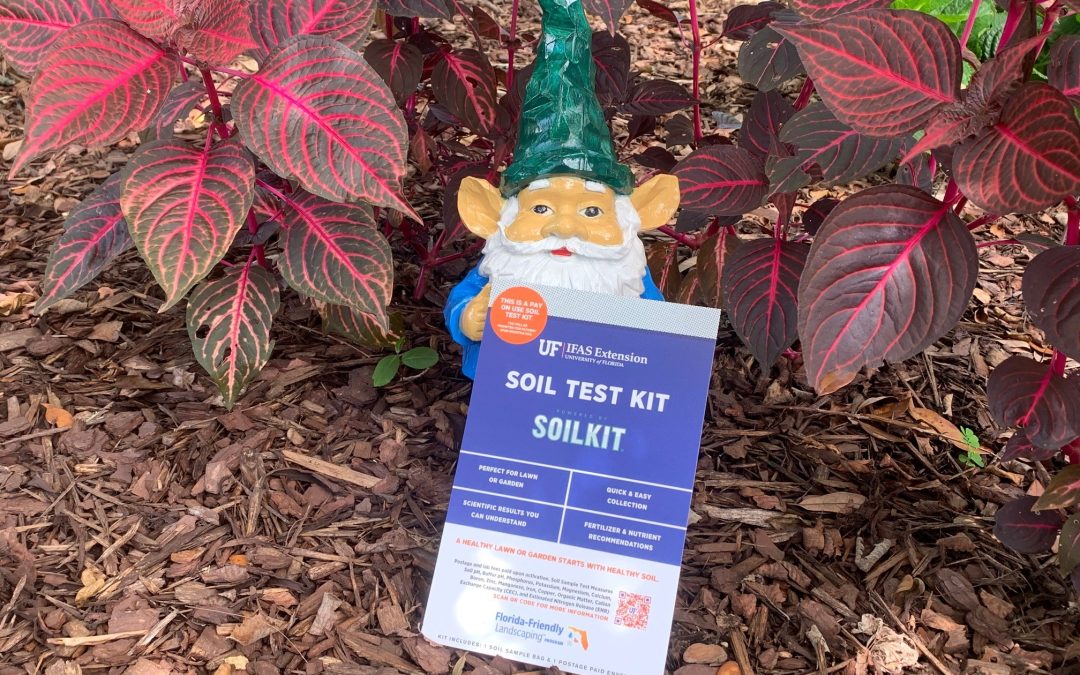
by Beth Bolles | Aug 9, 2025
You have probably heard about the SoilKit testing option that is available at local UF IFAS Extension offices. Why would you want to use a new testing kit when the traditional soil testing kit is still available ?
UF IFAS Extension SoilKit is an option for those who want their turfgrass test results based on the latest evidence-based science. This is especially important when dealing with the application of phosphorus, a potentially polluting nutrient. If your soil measures adequate phosphorus for our warm season turfgrasses, you don’t want to add more.
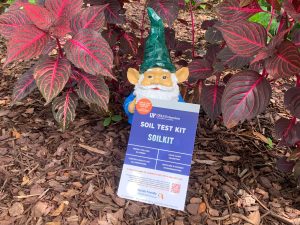
UF IFAS Extension SoilKit. Photo by Beth Bolles, UF IFAS Extension Escambia County.
The good news is that UF IFAS turfgrass research has established thresholds for when nutrients like phosphorus are needed. SoilKit is aligned with these thresholds and will only recommend nutrients based on the evidence-based science.
SoilKit does cost more than the traditional soil testing. The convenience is that it includes postage so you put it directly in your mailbox for pickup. Another positive is that when you register your kit online, you can locate your home on a map and mark the square footage of the lawn area. When you get your results in a few days, there is no guess work. You will get a list of products and amounts to purchase for your size lawn.
SoilKit can be used to test other plant groups including gardens and shrubs. If you have questions about using SoilKit, your local Extension office can help.
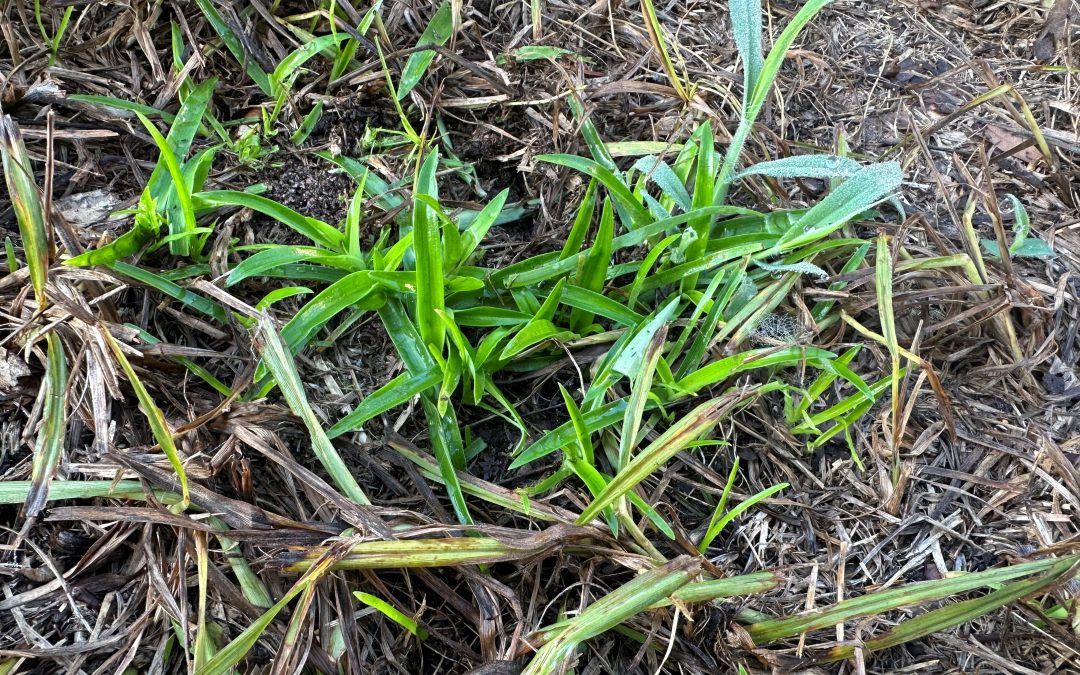
by Daniel J. Leonard | Jun 5, 2025
The Panhandle’s dreaded summer heat has finally arrived in force and has brought with it one of the most difficult to control lawn/landscape weeds, our annual enemy Doveweed (Murdannia nudiflora). Doveweed is characterized as one of the world’s worst weeds due to its broad range of growing conditions, ability to root along its stems, forming mats as it grows, massive seed production (each plant can produce up to 2,000 seeds per year), and inconspicuous nature – it looks like a grass to the untrained eye. So, what can gardeners do to control Doveweed that’s already up this year and prevent it next summer? Let’s find out.
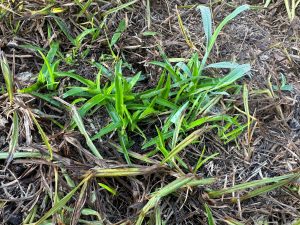
Doveweed emerging in a bare patch of a Centipedegrass lawn in late May 2025. Photo courtesy of Daniel Leonard.
First, the best prevention for all weeds, Doveweed included, is a healthy lawn/landscape. Ensuring healthy, thick Centipedegrass turf and landscaped beds that don’t allow light to hit bare soil goes a long way towards reducing the overall weed load lawns and landscapes can experience. For lawns, this can be achieved through mowing regularly at the proper height for your turfgrass (2.5” or so for Centipedegrass), irrigating no more than 0.75”-1” per week in the absence of rain, limiting stress from overfertilization, and removing excess thatch. In landscapes, preventative weed control focuses on limiting overwatering/fertilization and maintaining a 2-3” organic mulch layer of pinestraw, pine bark, leaves, wood chips, etc. Adopting these practices can greatly reduce the occurrence of weeds in your yard, however they will not eliminate weeds altogether and supplemental chemical weed control is often necessary.
Unlike Crabgrass, Florida Pusley, and other commonly encountered Panhandle annual weeds that emerge when the soil begins to warm in early spring (usually late February-March), Doveweed waits until mid-April-May (soil temperatures of 70-80 degrees F). All these annual weeds are best controlled by preemergent herbicides, like Indaziflam (Specticle G), before seeds germinate. For Doveweed, that means the first preemergent application should occur mid-April with a follow-up application 6-8 weeks later. However, for this year that opportunity is behind us and our only option is post emergent herbicides.
Which postemergent herbicide you choose depends on if your Doveweed issue is in turfgrass or in landscaped beds. In landscaped beds, the primary control option is either hand pulling or spot treating Doveweed with a 41% glyphosate product (Roundup and other generic products) at a rate of 3% (3-4oz glyphosate/gal). As glyphosate is a non-selective herbicide, be sure to not get any overspray on any ornamental plant foliage. In turfgrass, Doveweed control becomes a little more difficult. You essentially have three options – atrazine, a generic 3-way broadleaf product, or a commercial grade broadleaf product. Though it provides very good control of Doveweed and has pre-emergent properties to help discourage future weeds, I don’t prefer atrazine because it has a high potential to leach into groundwater following heavy rains in sandy soils, which describes much of the Panhandle. The generic 3-way products (usually a mix of Dicamba, Mecoprop, and 2,4-D) are fairly effective on Doveweed, however follow-up applications are usually required and the 2-4D component can be harsh on Centipedegrass at the higher label rates required for Doveweed control. Though somewhat expensive, the best post emergent option for most people is probably a commercial grade product like Celsius WG. Celsius WG is a very strong post emergent broadleaf herbicide that is very effective on Doveweed and is also very safe on Centipedegrass, even in hot weather. If the cost of the product (>$100) is off-putting, it is helpful to remember that even at the highest labelled rate, a 10 oz Celsius WG bottle goes a long way, enough to cover several acres of lawn.
* Regardless of what method you choose, be sure to get after emerged Doveweed seedlings early, before they mature and begin flowering – even the strongest post emergent herbicides work better on young weeds.
While Doveweed is a nasty little plant that is perfectly capable of taking over a lawn or landscaped bed, there are a variety of preventative and control options available. Using a combination of the above techniques should help achieve lasting Doveweed controls in future seasons! For more information about Doveweed and other summer annual weed control in lawns and landscapes, contact your local UF/IFAS Extension County office.

by Larry Williams | Oct 31, 2024
So far, our fall has been unusually dry with warmer temperatures. Even though our average annual rainfall is around sixty-two inches per year, we don’t always receive rain exactly when we need it. There are times when we need to apply additional water. During dry weather, employ the following water management practices to improve the water efficiency of your lawn and landscape.
Mulching helps conserve water. On bare ground, about sixty percent of the water can be lost through evaporation. A two to three-inch layer of mulch will help hold onto the water so the plants can use it. Try to mulch the entire root zone when possible or at least apply mulch all the way around the plants out to the end of the branches.
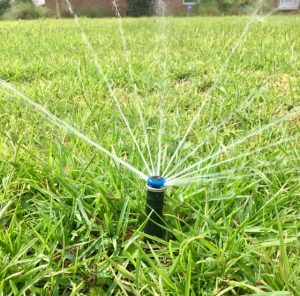
Irrigate on as needed basis during dry periods. Credit: Larry Williams
When watering, a thorough soaking to wet the soil to a depth of six to eight inches is much better for plants than light, frequent watering. Three to five gallons of water applied to one spot under the canopy of trees or shrubs should thoroughly saturate the root zone in that location. During dry periods, as a general rule), twenty-five percent of the root system, when watered thoroughly, can absorb all the water a plant requires at any given time.
When watering lawns, apply one inch of water per week when we are not getting rain. Although many sprinklers have irrigation rates of ¼ inch per hour, some may apply up to one inch per hour. Measure your irrigation rate and uniformity by placing several open-top containers of the same size under the sprinkler and see how long it takes to apply a known amount of water such as ½ inch.
An efficient irrigation program on turf should not begin until the lawn grass shows signs of moisture stress. Symptoms include a dull and bluish-green color and leaf blades folding. The most efficient time to irrigate is between sunset and sunrise because of less evaporation, less wind and lower temperatures. Early morning is the next most effective time to irrigate while midday is the least efficient.
Avoid fertilizing drought-stressed plants. Fertilizers are chemical salts and will dehydrate roots when water is in short supply. If you need to apply a pesticide, make certain the plant is not wilted at the time and spray during early morning or late afternoon. You should also avoid unnecessary pruning of plants during drought. Pruning encourages new growth, which has a high demand for water.
For more information on watering efficiently and drought tolerant plants, contact the UF/IFAS Extension Office in your county or visit the following website: http://gardeningsolutions.ifas.ufl.edu/care/irrigation.
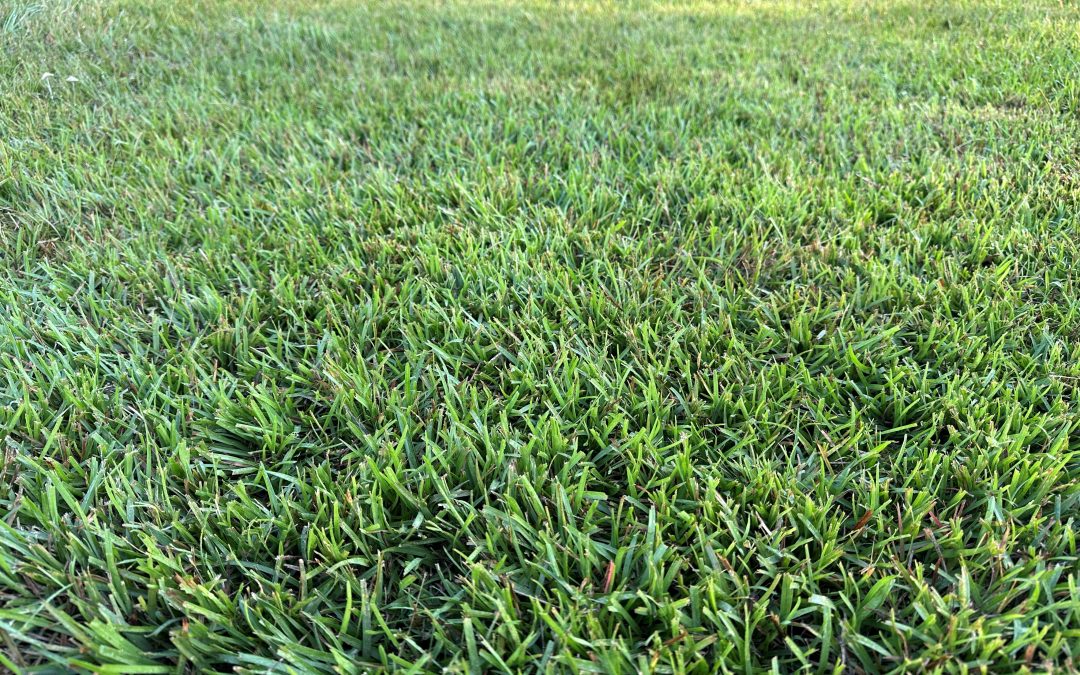
by Daniel J. Leonard | Oct 4, 2024
It’s hard to have a great yard full of Centipedegrass isn’t it? All the fertilizer, watering, aerating, weed spraying, fungicide spraying, insect spraying, the list is never-ending and wallet draining. Except, it’s not hard and doesn’t have to be expensive. It’s easy. In fact, it’s so easy that people even make it hard because they think it should be. The list of basic tips to achieve a great yard of Centipedegrass is very short, let’s get into it.
Fertilizing Properly – Keep it to a minimum! Centipedegrass has a very low Nitrogen (N) requirement for optimum growth and development (0.4 lbs – 2 lbs/1000 ft 2 per year). Centipede is naturally light green in color and trying to force the deep green of Kentucky Bluegrass upon it will almost certainly do it harm. There are many excellent quality Centipedegrass lawns in the Panhandle that have never received a single prill of fertilizer. Don’t take my word for it though, the UF/IFAS publication Centipedegrass for Florida Lawns says, “Established centipedegrass lawns require about 50% less nitrogen fertilizer than other lawn grasses grown in Florida. Centipedegrass is a low maintenance turfgrass and does not respond well to excessive use of fertilizer, especially nitrogen.”
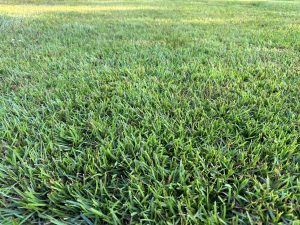
Centipedegrass lawn that has never been fertilized and mowed regularly when it reaches 3″ to achieve a 2.5″ cut height. Photo courtesy Daniel Leonard.
Timely Mowing – Other than overfertilizing, the next easiest way to cause significant damage to a Centipedegrass lawn is to mow it incorrectly. Centipede prefers a mowing height of around 2.5” and actively growing grass should be mowed every 7-14 days, removing no more than 1/3 of the grass blade. In my experience, this is much higher and often less frequent than many people mow their lawns. All too often, I see Centipede lawns that are allowed to grow tall and unkempt and then mowed to near golf course fairway height with the occasional bare “scalped” spot where the mower ran across an unlevel area of lawn. Mowing short and infrequently is harmful because mowing is inherently a major stress to the grass. You’re asking a lot of a plant by removing a large chunk of photosynthetic leaf tissue and then repeatedly asking the plant to regrow. Be kind to your grass and mow correctly. *Additionally, try to not mow your lawn in droughty conditions as this can exacerbate mowing stress and cause serious lawn issues.
Right Plant, Right Place – Much of the bad rap turfgrass receives comes from people trying to force it to grow where it shouldn’t be. If your yard has areas of significant shade or receives significant foot or vehicle traffic, Centipedegrass (or most any grass for that matter) may not be for you, in those areas at least. Like all turfgrasses (though some are more shade and traffic tolerant than others), Centipedegrass does best in full sun and detests having the soil its roots are going in repeatedly trampled and compacted. In areas with those conditions, maybe having a mulched landscaped bed with shade tolerant plants or a rocked walking path would be more appropriate. You and the grass will certainly be happier working with those options than fighting against your site conditions.
Though maintaining a Centipedegrass lawn is simple, that isn’t to say that if you follow all these tips that your yard will be perfect all the time. There will still be the occasional dieback, weed ingression, mole cricket infestation and the like, however, following the above tips will make your grass much more resilient and equipped to handle those stresses. For more information about Centipedegrass or other horticultural topics, contact your local UF/IFAS Extension office. Happy gardening!












